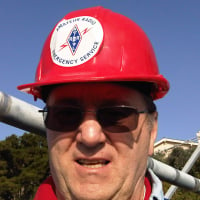Welcome to the FlexRadio Community! Please review the new Community Rules and other important new Community information on the Message Board.
Need the latest SmartSDR or 4O3A Genius Product Software?
SmartSDR v4.1.3 and the SmartSDR v4.1.3 Release Notes
SmartSDR v3.10.15 and the SmartSDR v3.10.15 Release Notes
The latest 4O3A Genius Product Software and Firmware
SmartSDR v4.1.3 and the SmartSDR v4.1.3 Release Notes
SmartSDR v3.10.15 and the SmartSDR v3.10.15 Release Notes
The latest 4O3A Genius Product Software and Firmware
If you are having a problem, please refer to the product documentation or check the Help Center for known solutions.
Need technical support from FlexRadio? It's as simple as Creating a HelpDesk ticket.
Need technical support from FlexRadio? It's as simple as Creating a HelpDesk ticket.
Is there anywhere that I can get a thorough explanation of the technology behind the Flex 6000 Serie
Answers
-
We do not file patents. Patents are blueprints for competitors and are only useful if you are interested in litigating. We are not -- we want to build radios. The last patent I prosecuted **** $40k from my company with no return.0
-
AMEN!
You are absolutely correct about competitors using patents to steal info..
Albeit I did get left with a few bucks most of the times after the lawyers took theirs..
0 -
AC2GS: "...He has been an Electrical Engineer, mostly focused upon antenna design for more than 50 years...When I mentioned its panadapter's bandwidth, it was his opinion...if it was using silicon alone, my machine would be close to melting from the heat and probably have the price of a military project..."
It was originally military, you can see some of the background here: https://en.wikipedia.org/wiki/Software-defined_radio
It is true that high-performance processing formerly produced a lot of heat. The Cray-1 consumed 115 kilowatts, was cooled by freon pipes, and did about 100 MFLOPS (million floating point operations per sec): http://drhart.ucoz.com/Mainframe/CRAY_install.jpg
At about 116 GFLOPS, the The Virtex-6 FPGA used by FlexRadio is about 1,000 times faster than the Cray-1 and consumes a few watts: https://alpha-t.net/wp-content/uploads/2013/12/Xilinx-Virtex-6-chip-straight-300x289.jpg
Things have now progressed to where a UHF cable TV multi-tuner receiver can be implemented in software: https://www.youtube.com/watch?v=sspSh7o3x_A
Recent general-purpose Intel Skylake i7-6700K CPUs using Cray-like vector instructions can achieve 240 GFLOPS, or 2x the FPGA in the Flex 6000. However these are not practical for embedded applications due to power consumption (about 100 watts) and price.
The highest-end Intel Xeon E7-8890 v3 (18 cores) has been benchmarked at nearly 3,000 Linpack GFLOPS (3 TFLOPS), which is 30,000 times faster than the original Cray-1. It consumes about 165 watts. That one chip is $7,000. However the Cray-1 was $10 million in 1975, or about $40 million today, so the Intel chip is cheap relative to that.
Fast as those general-purpose CPUs are, the Altara Stratix 10 DSP can do > 10 TFLOPS, or over 3x the Intel Xeon E7-8890 v3, and consumes much less power. That is why dedicated DSP chips are used, despite the great gains by general-purpose CPUs.
The fastest US Supercomputer is the Cray Titan XK7, which at 27 TFLOPS is "only" about 10x faster than the Intel Xeon E7-8880 v3.
By 2017 US supercomputers are expected to reach a peak performance of 300,000 TFLOPS using a combination of nVidia GPUs and IBM Power9 CPUs. If my math is correct that will be three *billion* times faster than the original Cray-1: https://www.google.com/url?sa=t&rct=j&q=&esrc=s&source=web&cd=1&cad=rja&...
So yes AC2GS, in the 50 years your friend has been an electrical engineer there has been progress.
1 -
Steve,
We were threatened by Lucent but because of our patents they went away. Then Lucent sued a Silicon Valley call center manufacturer with the thought of a $14-million per year royalty. The Silicon Valley company bought our patent portfolio and once again Lucent went away.
The very good use you didn't mention for patents above is DEFENSE. The Silicon Valley company had no patents & no defense. You don't have to chase anyone to justify the cost of a few good patents.0 -
We don’t prosecute the patent infringer since it would cost us a ton of money and time, instead we have our lawyers write to the retailer or distributor and inform them of the infringement. You would be amazed to see how fast the shelves get cleared and the product returned to source, that’s very expensive for the source infringer and minimal cost to us.
0 -
Patents only work in the USA for the big guys who can afford the time and costs. If you are a little guy, the big guys figure to outspend you so you have to give up.0
-
Regarding Patents:
I have 11 filed 28 while working for Bell-South/Cingular/AT&T at an average cost of $28K and I don't think any of it produced enough in return to pay for the effort. So I agree with Steve and Howard.0
Leave a Comment
Categories
- All Categories
- 375 Community Topics
- 2.1K New Ideas
- 629 The Flea Market
- 8.2K Software
- 105 SmartSDR+
- 6.4K SmartSDR for Windows
- 183 SmartSDR for Maestro and M models
- 425 SmartSDR for Mac
- 271 SmartSDR for iOS
- 255 SmartSDR CAT
- 190 DAX
- 381 SmartSDR API
- 9.3K Radios and Accessories
- 36 Aurora
- 250 FLEX-8000 Signature Series
- 7.2K FLEX-6000 Signature Series
- 941 Maestro
- 55 FlexControl
- 864 FLEX Series (Legacy) Radios
- 917 Genius Products
- 460 Power Genius XL Amplifier
- 334 Tuner Genius XL
- 123 Antenna Genius
- 294 Shack Infrastructure
- 206 Networking
- 453 Remote Operation (SmartLink)
- 144 Contesting
- 784 Peripherals & Station Integration
- 139 Amateur Radio Interests
- 1K Third-Party Software
